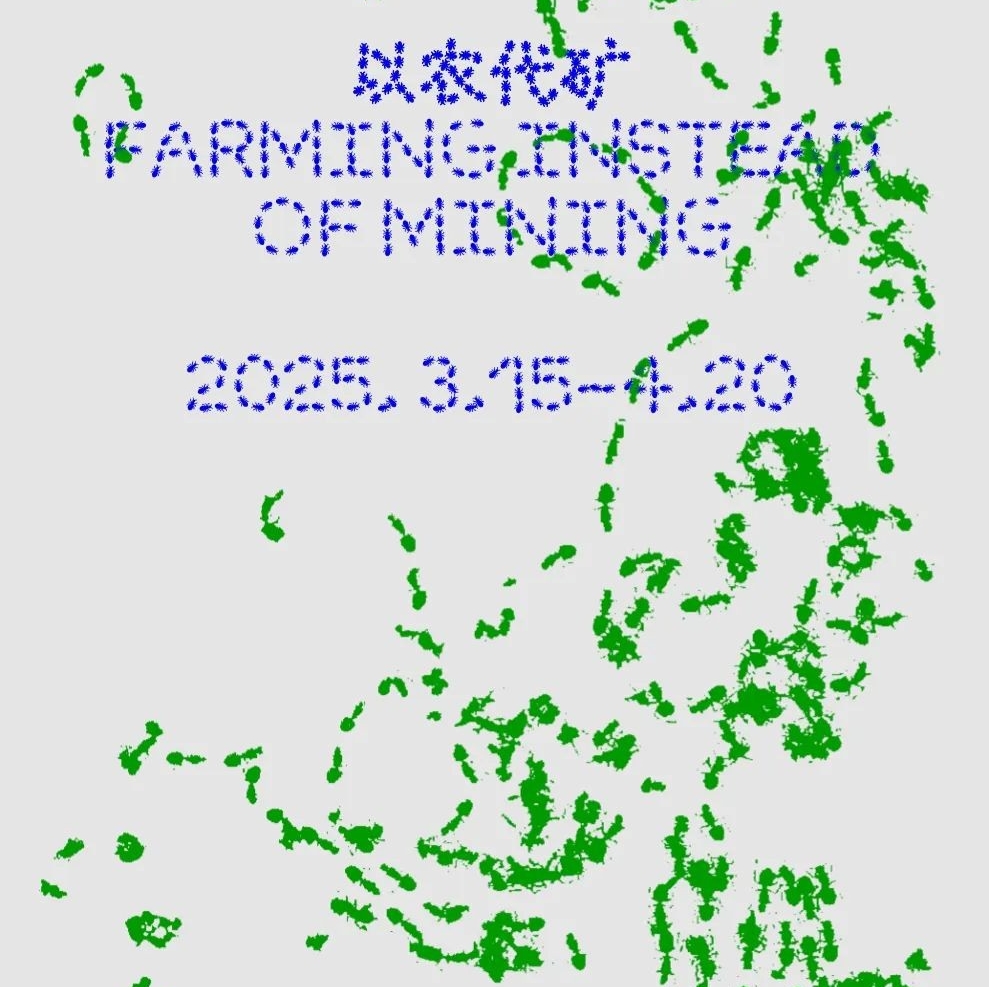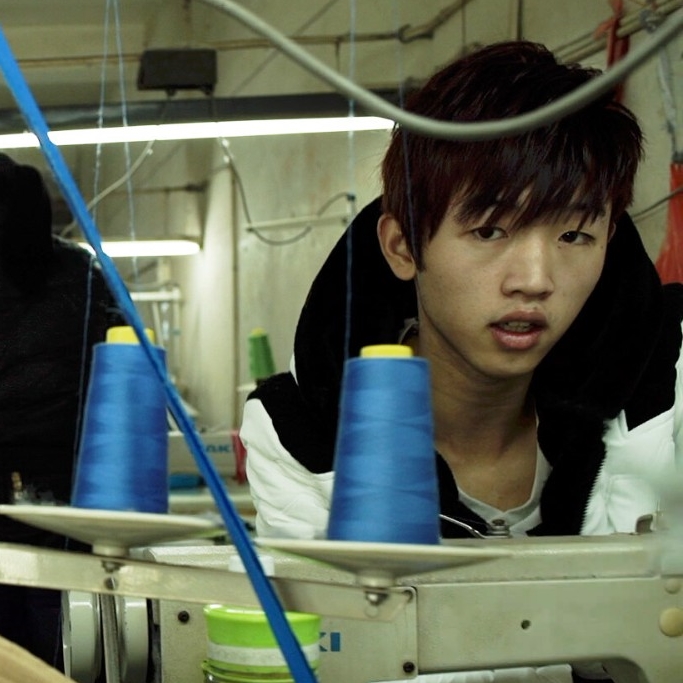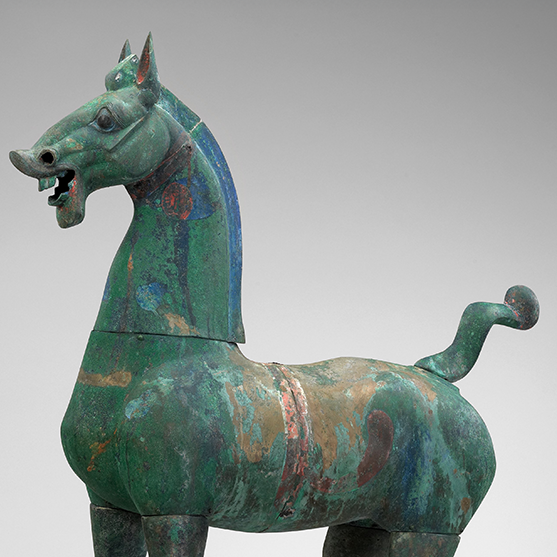
Exhibition View of The Unending Rose
ShanghART presents the artist Han Mengyun’s first solo exhibition with the gallery, "The Unending Rose". Borrowing its title from the Argentine writer Jorge Luis Borges’ eponymous poem, the exhibition brings together the artist’s most recent paintings, works on paper, as well as architectural and video installations.
In the poem, through the Sufi poet Attar of Nishapur who gazes at the rose, a symbol trapped in the finitude of human language, Borges discovers the literary infinity of the rose, which perennially accrues meaning via the course of migration and the collective act of retelling. Inspired by transcultural literary traditions and the subsequent semantic transformation, Han Mengyun shares with Borges such belief in the potential of infinity represented by the rose.



Exhibition View of The Unending Rose
At the heart of the exhibition lies the “mirror pavilion,” an architectural installation inspired by an ancient tale of “The competition between Chinese and Rum artists” retold in Khamsa by the 12th-century Persian poet Nizami Ganjavi. The story goes that Alexander the Great, hearing that both the Romans and the Chinese were famous for their painting, wanted to see who in the world was the best. He then summoned a Roman and a Chinese painter to compete in the royal hall on two opposing walls. By the end of the competition, two identical paintings emerged. The Roman painting was splendid in its incredible realism and vividness while the Chinese painter did not paint but simply polished the wall into a mirror, through which the Roman’s painting across the room and the world were reflected.


Exhibition View of The Unending Rose
First shown in the inaugural Diriyah Biennale (2021), “The Pavilion of Three Mirrors” aims to render an abstract and poetic representation of this ancient story, which provides many insights into the different conceptions of visual representations between cultures. The work also sheds light on the premodern history of cultural exchange that goes unnoticed in our present time, while offering an alternative paradigm of image-making through the rediscovery of a shared legacy across cultures. In the second iteration The Unending Rose, the vaulted mirror installation not only represents the Chinese painter that polishes a mirror in the story but also a Borgesian mirror labyrinth, in which the path forks at every possibility of interpretation and decision of the viewer.

Han Mengyun, Soul, 2023
Oil and acrylic on canvas, 210(H)*140*2.5cm (x 2 pieces)
Inspired by the visual configuration of book art – an early form of global media that forged trans-regional connections and shaped cross-cultural contacts – Han Mengyun’s paintings merge the formal characteristics of Buddhist and Islamicate manuscripts with elements drawn from Chinese and Japanese woodblock-printed books. This amalgamation of diverse influences is set against the backdrop of the material basis of the Western painting tradition, resulting in a rich transcultural visual hybridity. The eponymous painting series embodies such hybridity and the woodblock-printed ornamental borders suggest that the paintings are at the same time books. On the page that is the canvas, the rose is conceived as a signifier that forges a semantic connection between symbolic construction and the signified. As a product of language, the rose is bound to be reconfigured, the objectifying gaze displaced.

Han Mengyun, Panchatantra: The Origin, Dream, کتاب (Book), चन्द्र (In Praise of the Moon), Le Désir, 2023
5-channel colour, silent, loop, video installation, artist designed stainless steel book stand, Nepalese handmade paper
25(H)*40.4cm (x 5 pieces) | The Origin 19 minutes 59 seconds | Dream 5 minutes 43 seconds | Book 6 minutes 46 seconds | In Praise of the Moon 8 minutes 47 seconds | Le Désir 3 minutes 20 seconds
Edition of 3 + 2AP
Beyond traditional media such as painting and drawing, Han attempts to extend the word-image interplay peculiar to the book to contemporary media that provides a synesthetic experience. Her video installation, “Panchatantra,” explores disparate definitions of the mirror through five captivating videos, including “太初之时 (The Origin),” “梦 (Dream)," “کتاب书(Book),” “月的礼赞(In Praise of the Moon),” and “欲望 (Le Désir),” which are projected onto a book stand designed by the artist, blurring the boundary between seeing and reading, language and (moving) image.
In the poet’s endless incantation, the rose becomes infinite, like the repetition of prayer beads that render the shape of eternity. Following the footsteps of ancient poets, Han Mengyun returns to pre-modern pictorial, literary, philosophical and material manifestations of multicultural cross-pollinations, and by doing so, establishes the basis of a new paradigm of aesthetic pluralism that is necessary for imagining the coexistence of differences.
About the Exhibition
Duration: 5 Nov. - 7 Jan. 2024 (11am-6pm, Mon. Closed)
Location: ShanghART Shanghai, 1F, Bldg. 10, 2555 Longteng Avenue, Xuhui District, Shanghai, China
Courtesy of ShanghART Shanghai.




























